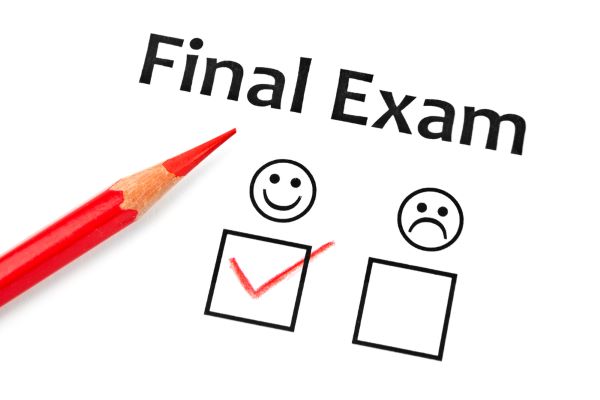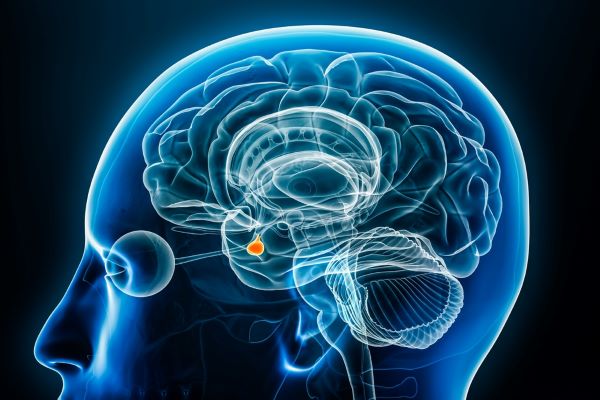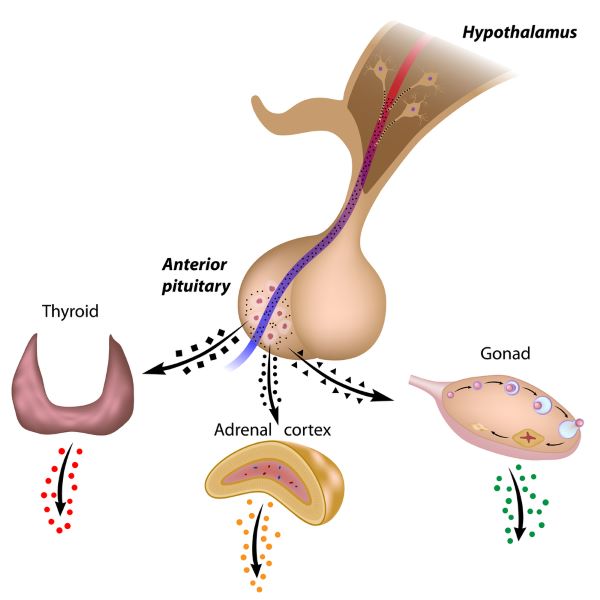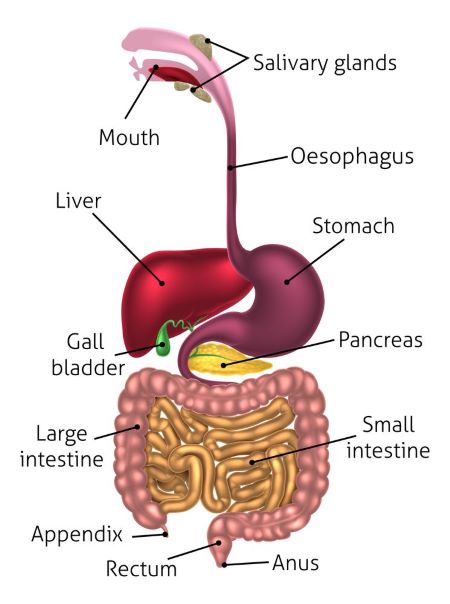Improve Your Exam Scores in A&P
A Simple Strategy for Achieving the Grade Need for Acceptance to the Medical Training Program You Choose
Premed students taking an introductory college course in human anatomy and physiology (A&P) struggle to achieve the B+ or better grade they desire. A B+ or better grade in A&P is often required for entrance to medical training programs.
Why you need a test taking strategy for A&P exams
You need a test taking strategy for A&P exams because high scoring answers to A&P exam questions require knowledge of both anatomic structures and the purpose they serve. A&P courses teach so much material that the temptation is to focus on learning the anatomic structures, and to set aside for later an understanding of why the structures are designed the way they are.
Giving in to this temptation is a mistake, because instructors are hoping to see evidence in their exams that their students understand participation of the anatomic structures in sequences of ongoing events within the body.
Easiest way to describe an ongoing sequence of events within the human body
The easiest way to predict how body structures will respond in sequence to internal or external events is to describe the influence of the three major communication systems on the response.
To do this during an exam, after you are sure you understand the exam question, think about the primary purpose of the named structure(s), organs, or anatomic system. Then briefly describe what you know by incorporating into your answer the following information:
- How the nervous system helps the anatomic structure achieve its purpose
- How local blood flow adjustment assist with nutritional needs as activity of the structure changes
- Hormones that play a role in optimizing execution of the structure’s tasks
How I discovered that using this 3-step strategy leads to high test scores in A&P
Long ago I was a student with my entire future career on the line with the outcome of a single oral exam. It was my PhD in physiology qualifying exam. There was one opportunity to take this exam, and it was a pass or fail grade. If I failed, I would have to leave the program without a degree after investing in 4years of graduate education.
Any topic from those 4 years of education was fair game during the 3 hours of my exam. There was a group of five examiners and me. Because the PhD in physiology is a research degree, the physiology of multiple species was included. But the final set of questions was about humans.
The ‘kind of’ human questions
The set of questions was:
“What do you hypothesize the endocrinological changes are in a normal person turning into a werewolf? What could trigger such an event? Which body systems would respond, and how would they be affected? How would you test your hypothesis?
I remember the questions well. This set of questions turned out to be the most fun of any posed that day. By the end of the three hours, the whole committee was joining in with tier theories of werewolf physiology.
Hint: Always take each question seriously.
What were my examiners looking for in my answer?
In this instance, my examiners wanted to know whether I understood how a trigger could set in motion a hormone process with multiple events that may cause alteration in human body structure. They wanted me to suggest endocrine pathways that may lead to the werewolf body type.
I picked an aural trigger that fit with what little I knew about werewolves. I hypothesized the trigger was moonlight striking the light receptors of the retina.
The retina, signaling through the retinal/hypothalamic nerve pathway resulted in a massive release of adrenal corticotropic hormone (ACT) and growth hormone (GH) from the anterior pituitary gland. As shown below other hypotheses were also possible.
My hypothesized sequence of events
Hypothesized plausible sequence endocrinological changes in a normal person turning into a werewolf: through release of anterior pituitary gland hormones.
- Sensory neurons of the retina set in motion release of the endocrine hormones that most affect skeletal muscle and bone structure to achieve werewolf morphology.
- The retinal hypothalamic nerve pathway carried the tenia signal to the hypothalamus of the brain.
- The hypothalamic neurons of the brain secreted their hormone peptides into the blood capillaries of the pituitary gland. The pituitary gland released growth hormone adrenocorticotropic hormone (ACTH) into the systemic blood circulation.
- Hypothalamus neurons also signaled for increased activity of the sympathetic nervous system.
- ACTH in blood increased synthesis and release of epinephrine and cortisol from the adrenal gland.
- Epinephrine helped the symptoms of neurotransmitter to shunt blood flow to skeletal muscle increasing blood flow there, muscle strength, and endurance of muscle activity.
- Cortisol had metabolic effect that released stored glucose from the liver to quickly elevate muscle energy levels.
- Pituitary growth hormone release was hypothesized to adjust bone morphology to sustain the enhanced muscle size and strength.
The werewolf is a fictional character. This makes it hard to test any hypothesis without some cooperative humans who occasionally became werewolves. If such a human could be found, the first thing to be tested would be the effectiveness of the trigger in activating release of anterior pituitary hormones.
The proposed sequence of hypothesized events was successful because it displayed a knowledge of human endocrinology. Notice that the hypothesized sequence includes neural activity, blood flow adjustments and particular hormones, the 3-stp strategy to high test scores.
Expected types of questions in A&P?
You may think that werewolf questions would never appear in an undergraduate exam. Yet, a few days later the same set of questions that I answered appeared on the final exam of undergraduate students taking a course in endocrinology offered by my department.
Practice the 3-step strategy
Let’s practice the 3-step strategy with an example question frequently found on A&P exams.
Question: “Describe the digestion of food in the gastrointestinal tract and the transfer of released nutrients into the blood stream”.
A person could write a book answering this open-ended question. But a brain dump of everything you have ever read about the human digestive system is probably not what your instructor is hoping to see in your answer.
There are several articles on this website that address this topic. Check them out and see if you can construct a concise sequence of events to describe how the gastrointestinal tract release from food and transfer into the blood stream the sugar, amino acids, lipids, and vitamins your body needs for energy and structural maintenance.
The following list of articles on this website will give you the information you need. What is the role of the nervous system? Wha adjustments are made for blood flow.? Which hormones are involved? Try this exercise. Leave your comments below. What are your challenges in using this strategy?
Digestion Further Reading
Human Digestion: Main and Accessory Organs
Gastrointestinal Tract Neural Regulation
Gastrointestinal Hormones for Digestion and Fasting
Do you have questions?
Please put your questions in the comment box or send them to me by email at DrReece@MedicalScienceNavigator.com. I read and reply to all comments and email.
If you find this article helpful share it with your fellow students or send it to your favorite social media site by clicking on one of the buttons below.
Margaret Thompson Reece PhD, physiologist, former Senior Scientist and Laboratory Director at academic medical centers in California, New York and Massachusetts is now Manager at Reece Biomedical Consulting LLC.
She taught physiology for over 30 years to undergraduate and graduate students, at two- and four-year colleges, in the classroom and in the research laboratory. Her books “Physiology: Custom-Designed Chemistry”, “Inside the Closed World of the Brain”, and her online course “30-Day Challenge: Craft Your Plan for Learning Physiology”, and “Busy Student’s Anatomy & Physiology Study Journal” are created for those planning a career in healthcare. More about her books is available at https://www.amazon.com/author/margaretreece. You may contact Dr. Reece at DrReece@MedicalScienceNavigator.com, or on LinkedIn.
Dr. Reece offers a free 30 minute “how-to-get-started” phone conference to students struggling with human anatomy and physiology. Schedule an appointment by email at DrReece@MedicalScienceNavigator.com.









Comments
Improve Your Exam Scores in A&P — No Comments
HTML tags allowed in your comment: <a href="" title=""> <abbr title=""> <acronym title=""> <b> <blockquote cite=""> <cite> <code> <del datetime=""> <em> <i> <q cite=""> <s> <strike> <strong>